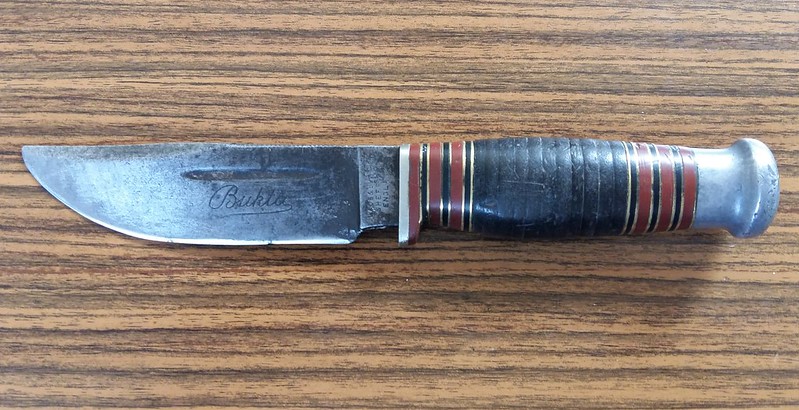My most recent find is this Wade & Butcher "Boone" carbon steel hunting knife.
It was discovered together with several other vintage hunting knives in an old leather hunting bag from the 1930's somewhere in Amsterdam.
The steel has gotten a dark grey patina from being stored inside the sheath for decennia.
On the blade the letters "ILLWELL" are very faintly visible, and through Google i found that originally it spelled "GILLWELL", which is the 144 acre site North of London given to the Scouts in 1919 and now the worlds historical site for scouts.
It seems that the change from "GILLWELL" to "GILWELL" took place when Baden Powell was made the first Baron Baden-Powell of Gilwell in 1929.
So in 1919, when the first Wood Badge course was held, it was Gillwell Park.
If the info from Google is correct that would date my knife to have been manufactured between 1919 and 1929, although the sheath is probably not original to the knife but most likely from Scandinavian origin.
What do you guys think ?













It was discovered together with several other vintage hunting knives in an old leather hunting bag from the 1930's somewhere in Amsterdam.
The steel has gotten a dark grey patina from being stored inside the sheath for decennia.
On the blade the letters "ILLWELL" are very faintly visible, and through Google i found that originally it spelled "GILLWELL", which is the 144 acre site North of London given to the Scouts in 1919 and now the worlds historical site for scouts.
It seems that the change from "GILLWELL" to "GILWELL" took place when Baden Powell was made the first Baron Baden-Powell of Gilwell in 1929.
So in 1919, when the first Wood Badge course was held, it was Gillwell Park.
If the info from Google is correct that would date my knife to have been manufactured between 1919 and 1929, although the sheath is probably not original to the knife but most likely from Scandinavian origin.
What do you guys think ?













Last edited:









 20181204_125819
20181204_125819 20181204_125940
20181204_125940
